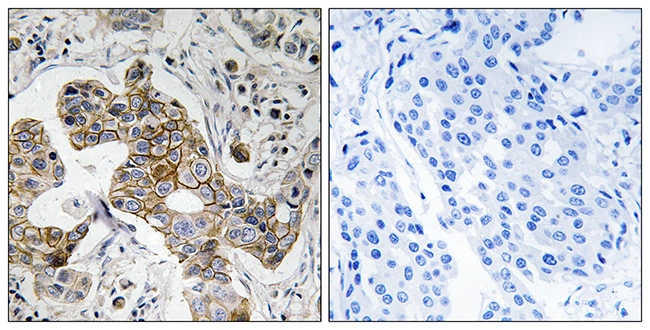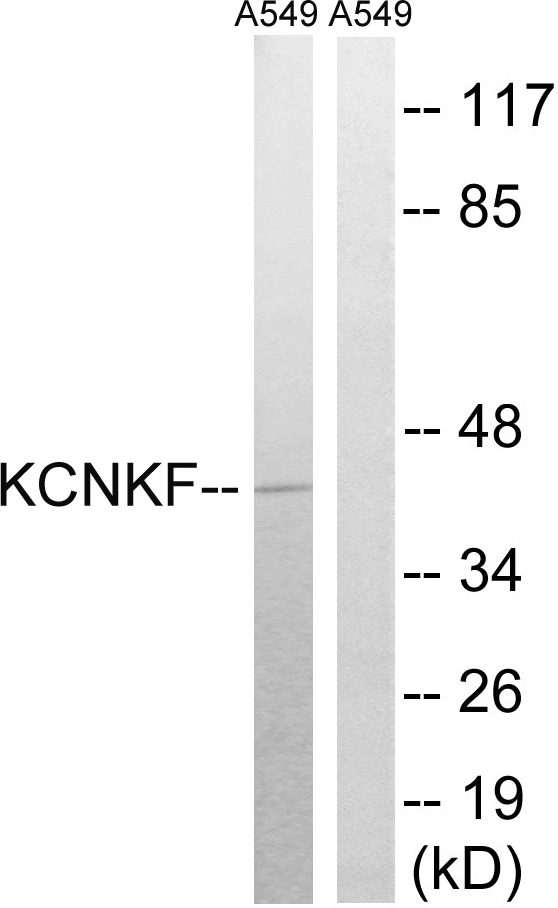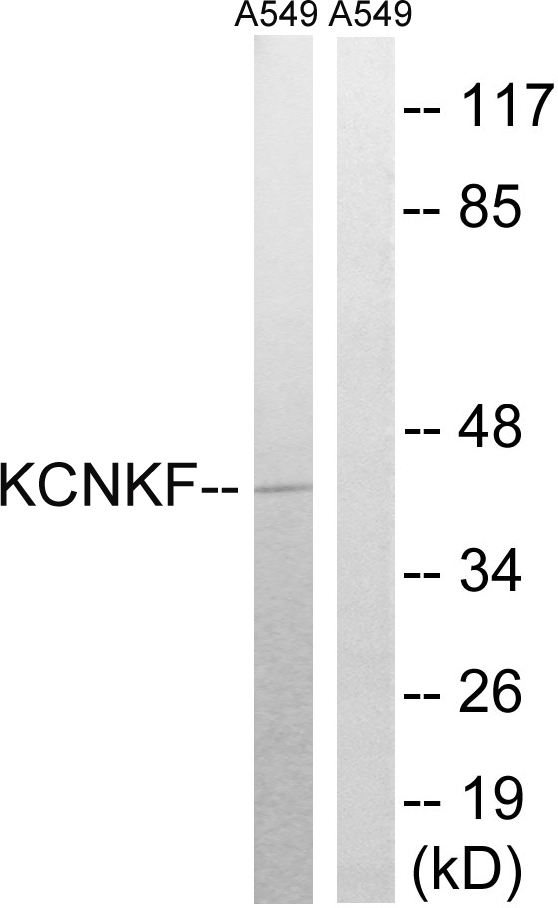
IHC-P analysis of human breast carcinoma tissue using GTX87879 KCNK15 antibody. The picture on the right is blocked with the synthesized peptide.
KCNK15 antibody
GTX87879
ApplicationsWestern Blot, ImmunoHistoChemistry, ImmunoHistoChemistry Paraffin
Product group Antibodies
TargetKCNK15
Overview
- SupplierGeneTex
- Product NameKCNK15 antibody
- Delivery Days Customer9
- Application Supplier NoteWB: 1:500~1:1000. IHC-P: 1:50~1:100. *Optimal dilutions/concentrations should be determined by the researcher.Not tested in other applications.
- ApplicationsWestern Blot, ImmunoHistoChemistry, ImmunoHistoChemistry Paraffin
- CertificationResearch Use Only
- ClonalityPolyclonal
- ConjugateUnconjugated
- Gene ID60598
- Target nameKCNK15
- Target descriptionpotassium two pore domain channel subfamily K member 15
- Target synonymsK2p15.1, KCNK11, KCNK14, KT3.3, TASK-5, TASK5, dJ781B1.1, potassium channel subfamily K member 15, TWIK-related acid-sensitive K(+) channel 5, TWIK-related acid-sensitive K+ 5, acid-sensitive potassium channel protein TASK-5, potassium channel, subfamily K, member 14, potassium channel, two pore domain subfamily K, member 15, two pore K(+) channel KT3.3, two pore potassium channel KT3.3
- HostRabbit
- IsotypeIgG
- Protein IDQ9H427
- Protein NamePotassium channel subfamily K member 15
- Scientific DescriptionThis gene encodes one of the members of the superfamily of potassium channel proteins containing two pore-forming P domains. The product of this gene has not been shown to be a functional channel, however, it may require other non-pore-forming proteins for activity. [provided by RefSeq, Jul 2008]
- Storage Instruction-20°C or -80°C,2°C to 8°C
- UNSPSC12352203





